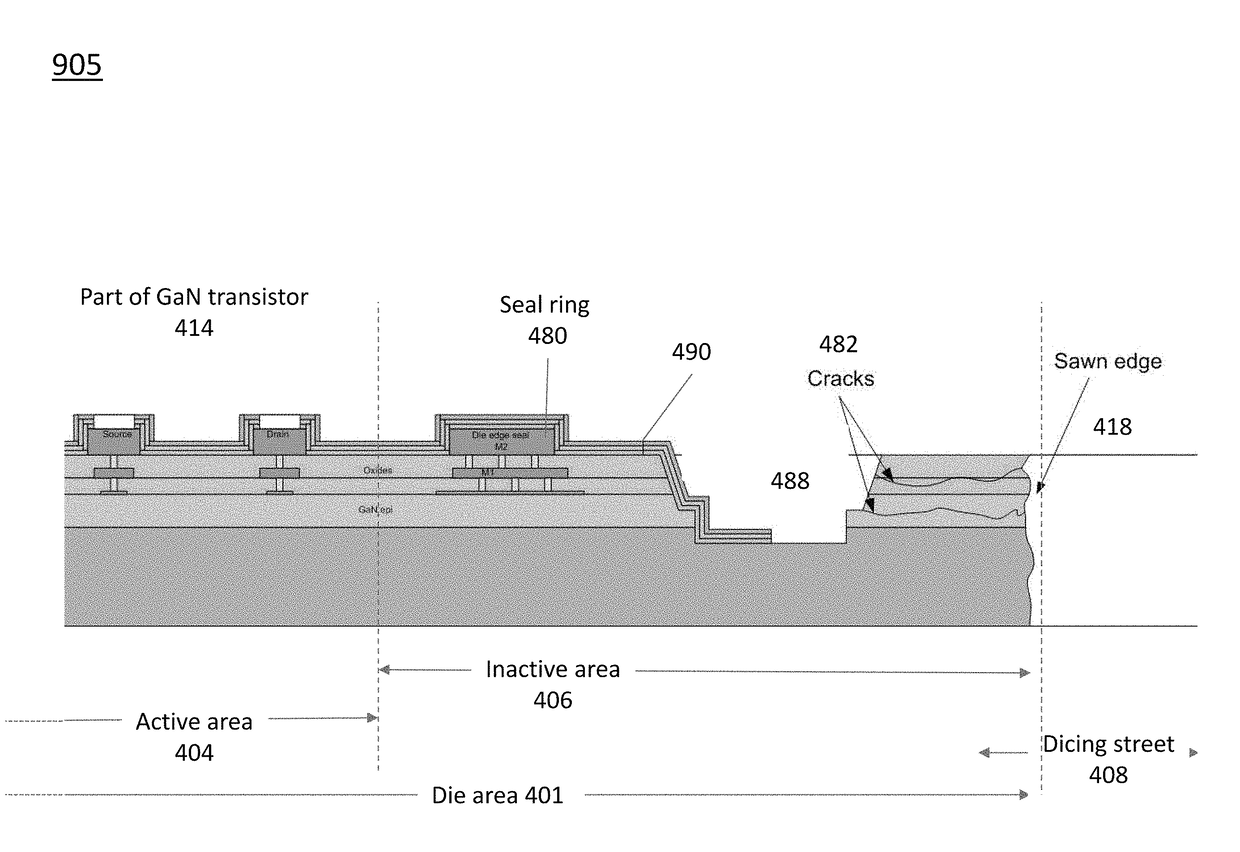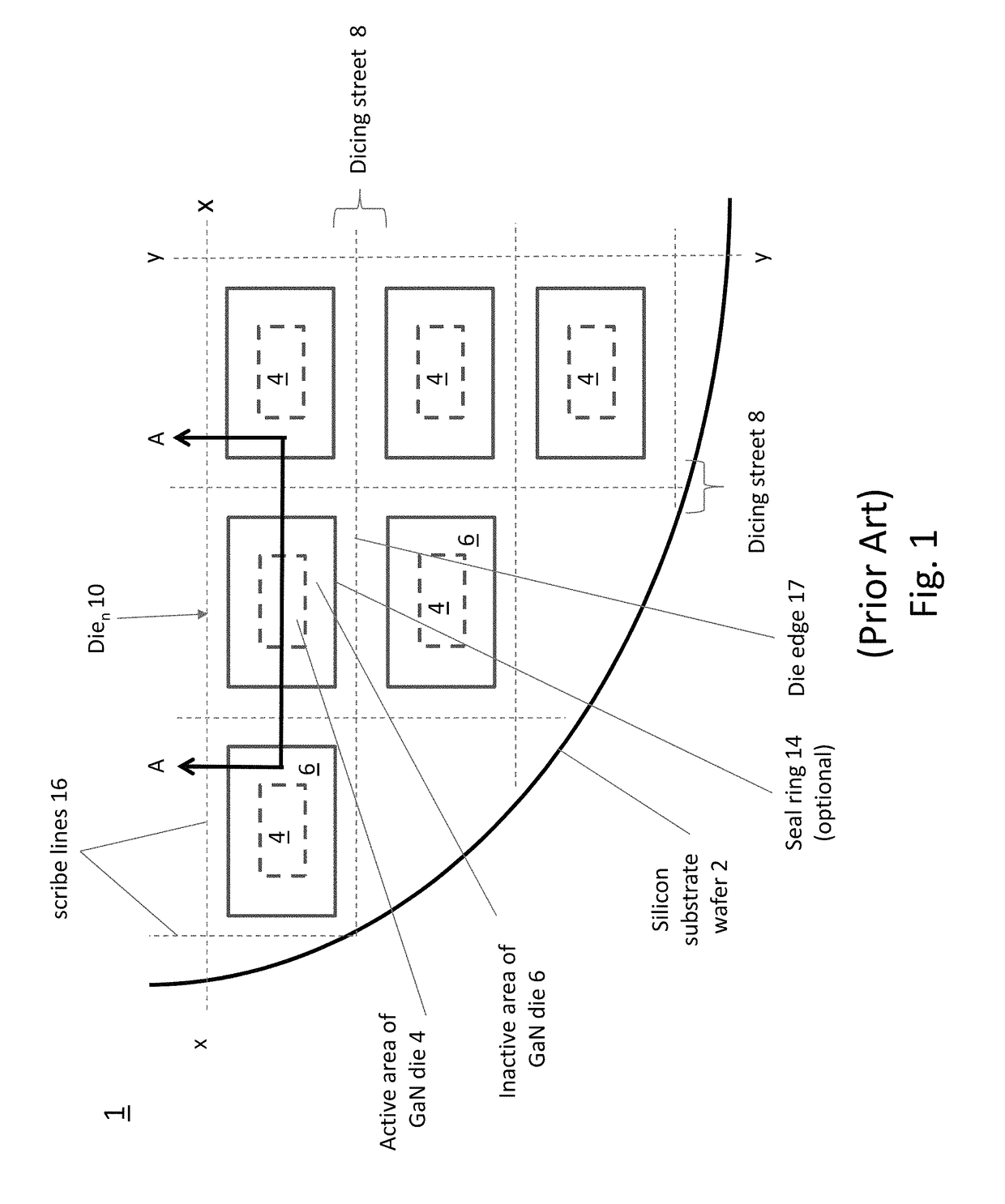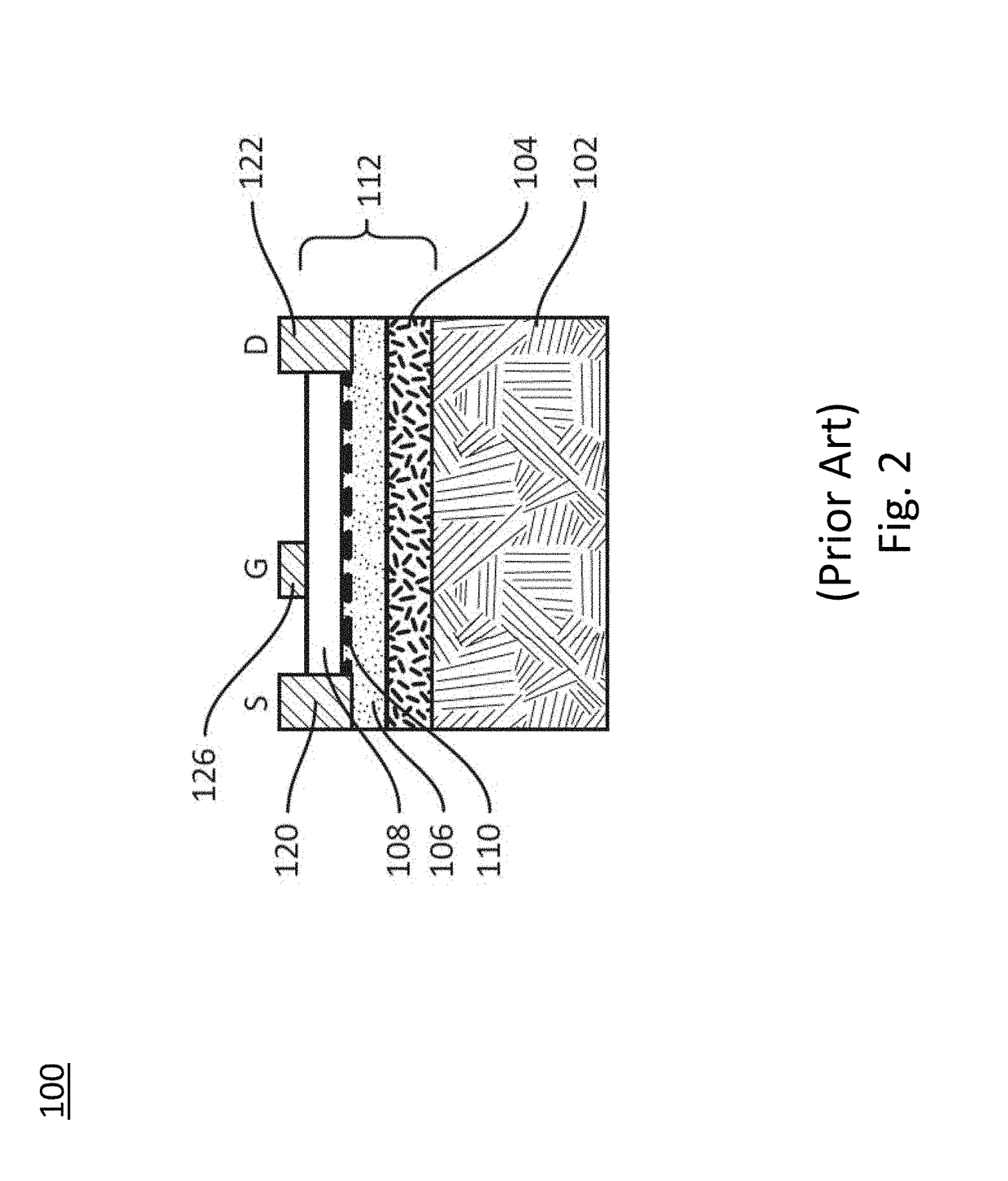GaN-on-Si SEMICONDUCTOR DEVICE STRUCTURES FOR HIGH CURRENT/ HIGH VOLTAGE LATERAL GaN TRANSISTORS AND METHODS OF FABRICATION THEREOF
a technology of gan-on-si semiconductor devices and gan-on-si, which is applied in the direction of semiconductor devices, semiconductor/solid-state device details, electrical apparatus, etc., can solve the problems of significant interlayer stresses/strains, wafer bowing, cracking during fabrication,
- Summary
- Abstract
- Description
- Claims
- Application Information
AI Technical Summary
Benefits of technology
Problems solved by technology
Method used
Image
Examples
first embodiment
[0084]FIG. 6 shows a simplified schematic cross-sectional diagram of part of the GaN-on-Si wafer 600 e.g. a cross section through A-A of FIG. 5 showing die. 110 and parts of neighbouring die.
[0085]Many elements of FIG. 6 are similar to those of FIG. 3 and are labelled with the same part numbers incremented by 100. That is, each die 110 comprises a lateral GaN power transistor 314 formed on a silicon substrate 202. The GaN transistor structure 314 comprises a plurality of GaN epitaxial layers, i.e. GaN epi-layer stack 312. The GaN epi-layer stack 312 includes a GaN / AlGaN heterostructure providing a 2DEG active region 310. Source electrode S, drain electrode D and gate electrode G of the lateral GaN transistor are formed on the 2DEG active region 310. Also shown are overlying Back End of the Line (BEOL) layers 330, i.e. comprising first and second metallization layers 332 (M1) and 334 (M2), and intervening dielectric layers 336 and 338. Conductive vias 340 interconnect the source and...
second embodiment
[0087]As illustrated in FIG. 7, a device structure is similar to that shown in FIG. 7. Additionally, in a device structure of this embodiment, a trench cladding 390 (trench lining) comprising an edge sealing layer or protective layer, is provided on at least the inner or proximal side walls of the pre-dicing trenches, surrounding each die. The trench cladding 390 may comprise one or more conformal dielectric layers, and optionally a metal layer, provided on the inner (proximal) sidewalls 392 of the trench, which seal any exposed edges of the epi-layer stack and overlying BEOL layers. In referring to inner sidewalls 392 of the trench 388, this means the sidewalls which are proximal to the centre of the die. The outer (distal) sidewalls 394 are closer to the edge of the die.
third embodiment
[0088]As illustrated in FIG. 8, in a device structure the cladding 390 is provided as a conformal layer or layers extending over the surface of the GaN-on-Si die, and extending over inner sidewalls of the pre-dicing trenches. The cladding 390 may comprise, e.g. one or more dielectric layers such as SiO2 or Si3N4. Optionally, the cladding further comprises a metal layer. The metal layer preferably acts as a barrier against electro-migration of contaminant ions. If a metal layer is provided, there would also be an overlying dielectric passivation layer, e.g. silicon nitride or silicon nitride to protect the metal layer against mechanical and environmental damage. The structures shown in FIGS. 6 to 8 may optionally include a seal ring, such as illustrated schematically in FIG. 4.
[0089]If required, the metal layer of the trench cladding 390 connects the substrate within the trench to a source electrode of the transistor, or, if a seal ring is provided, connects the substrate to metal l...
PUM
 Login to View More
Login to View More Abstract
Description
Claims
Application Information
 Login to View More
Login to View More - R&D
- Intellectual Property
- Life Sciences
- Materials
- Tech Scout
- Unparalleled Data Quality
- Higher Quality Content
- 60% Fewer Hallucinations
Browse by: Latest US Patents, China's latest patents, Technical Efficacy Thesaurus, Application Domain, Technology Topic, Popular Technical Reports.
© 2025 PatSnap. All rights reserved.Legal|Privacy policy|Modern Slavery Act Transparency Statement|Sitemap|About US| Contact US: help@patsnap.com



